
A Plan of the Town of Newport in Rhode Island, surveyed by Charles Blaskowitz for the British Admiralty, 1777. Engraving on paper. (Courtesy, Newport Historical Society.) Easton’s Point is shown above and to the left of Goat Island.
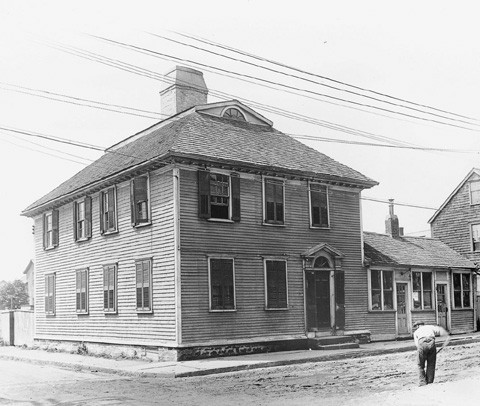
Christopher Townsend house and shop, 74 Bridge Street, Newport, Rhode Island, 1725–1735. (Courtesy, Newport Historical Society.)
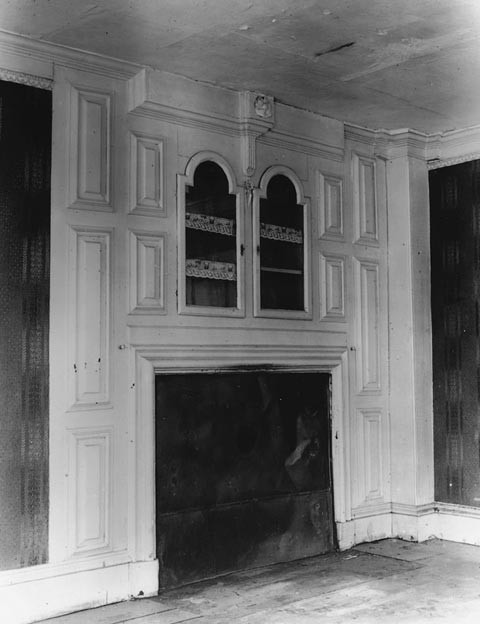
Detail of the interior of Christopher Townsend’s house. (Courtesy, Newport Historical Society.)
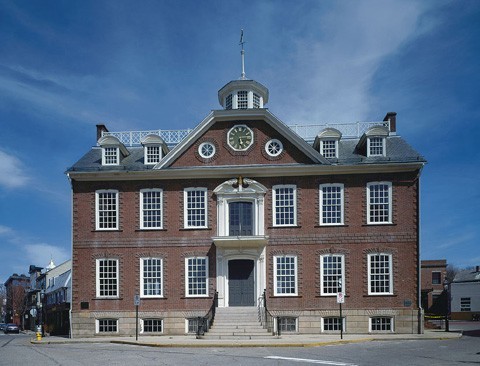
Colony House, Newport, Rhode Island, 1739–1749. (Courtesy, State of Rhode Island and Providence Plantations; photo, Gavin Ashworth.)
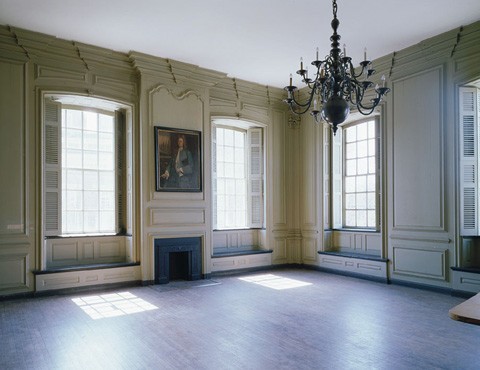
Detail of the senate chamber of the Colony House. (Photo, Gavin Ashworth.)

Detail of the paneling in the senate chamber of the Colony House. (Photo, Gavin Ashworth.)

Detail of a newel post in the Colony House. (Photo, Gavin Ashworth.)

Detail of two newel posts in the Colony House. (Photo, Gavin Ashworth.)
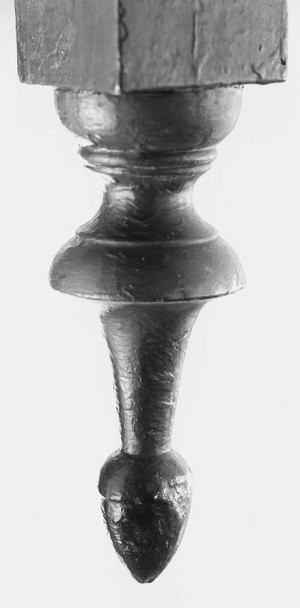
Detail of a turned pendant on a newel post in the Colony House. (Photo, Gavin Ashworth.)
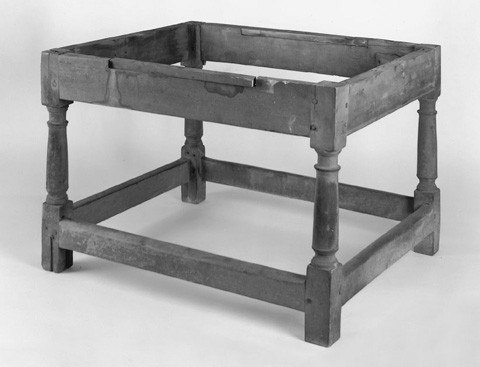
Joined table, Newport, Rhode Island, 1739–1749. Maple and white pine; blue paint.
H. 28 1/2", W. 42", D. 35 3/4". (Courtesy, State of Rhode Island and Providence Plantations; photo, Gavin Ashworth.)

Detail of a leg on the table illustrated in fig. 10. (Photo, Gavin Ashworth.)
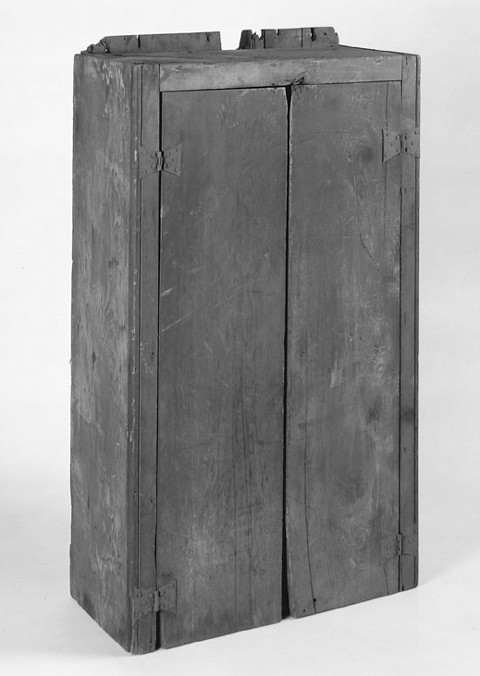
Cupboard, Newport, Rhode Island, 1739-1749. White pine; blue paint. Dimentions not recorded. (Courtesy, State of Rhode Island and Providence Plantations; photo, Gavin Ashworth.)
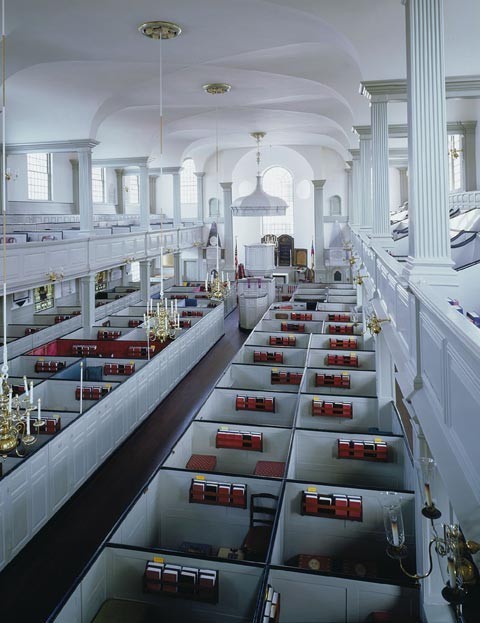
Detail of the interior of Trinity Church, Newport, Rhode Island, 1725–1730. (Photo, Gavin Ashworth.)

Detail of the paneling in Trinity Church. (Photo, Gavin Ashworth.)
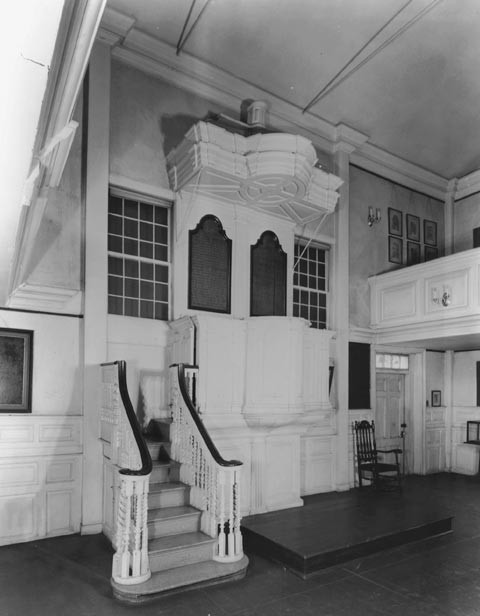
Detail of the interior of the Seventh Day Baptist Meeting House, Newport, Rhode Island, 1725–1730. (Photo, Gavin Ashworth.)
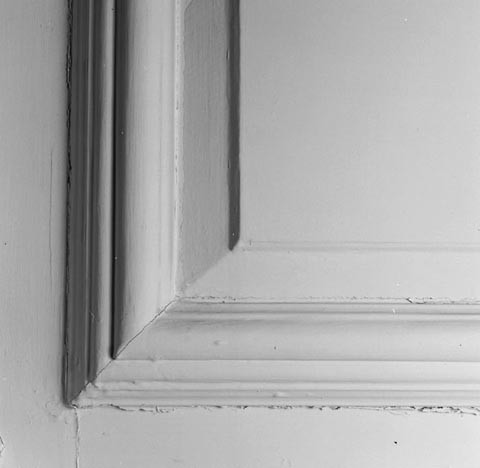
Detail of the paneling in the Seventh Day Baptist Meeting House. (Photo, Gavin Ashworth.)
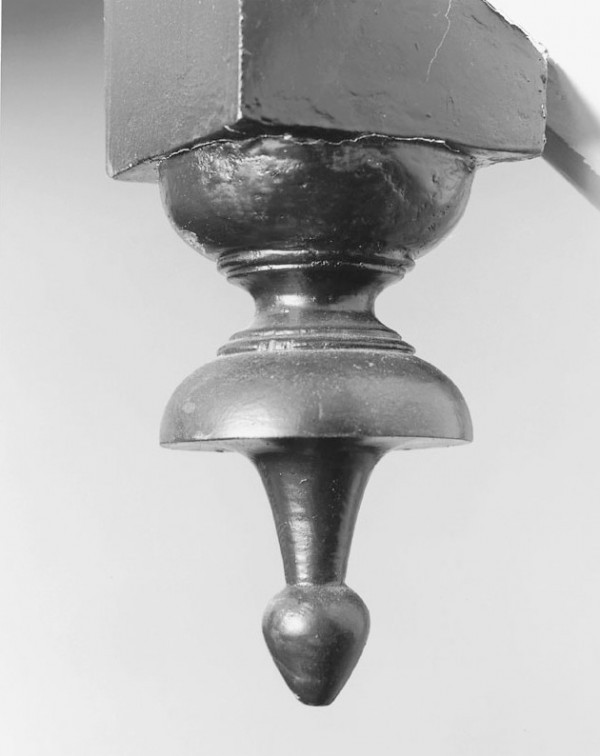
Detail of a turned pendant on a newel post in Trinity Church. (Photo, Gavin Ashworth.)
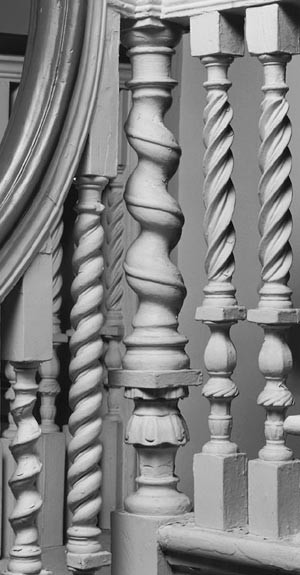
Detail of a newel post and balusters on the stair leading to the pulpit in the Seventh Day Baptist Meeting House. (Photo, Gavin Ashworth.)
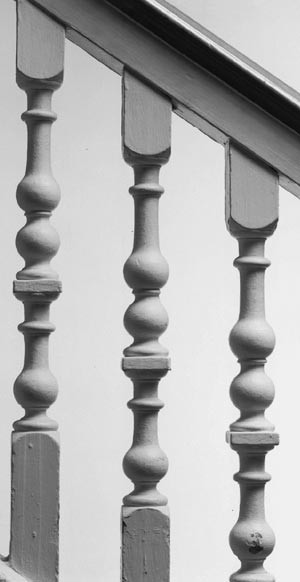
Detail of balusters on the stair leading to the gallery in the Seventh Day Baptist Meeting House. (Photo, Gavin Ashworth.)

High chest attributed to Christopher Townsend, Newport, Rhode Island, 1740–1750. Mahogany with tulip poplar. H. 83 5/8", W. 40 1/2", D. 22 1/4". (Chipstone Foundation; photo, Gavin Ashworth.) The chest retains its original china shelves, brass hardware, and finish.

Dressing table attributed to Job Townsend, Newport, Rhode Island, 1746. Mahogany with white pine. H. 30 1/2", W. 34 1/2", D. 22 1/2". (Chipstone Foundation; photo, Gavin Ashworth.)
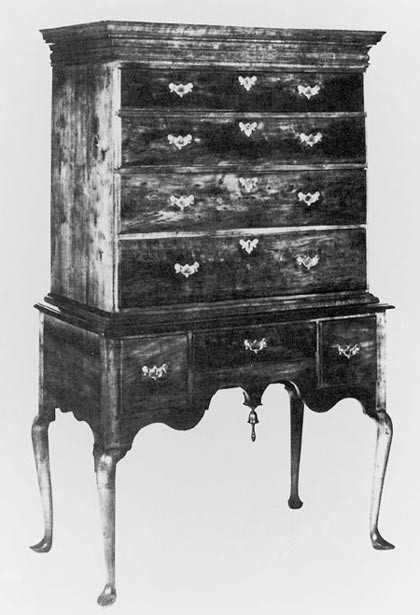
High chest, probably Long Island, New York, 1730–1740. Apple with tulip poplar. H. 70", W. 40", depth not recorded. (Courtesy, Florene Maine and Society for the Preservation of Long Island Antiquities.)
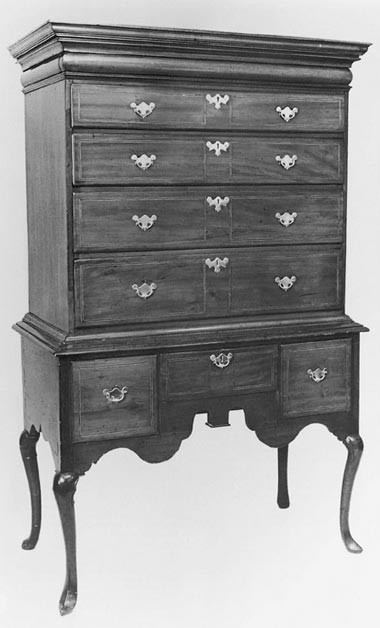
High chest, probably Long Island, New York, 1730–1740. Red gum with pine.
H. 70", W. 43", D. 22". (Private collection; photo, Society for the Preservation of Long Island Antiquities.)
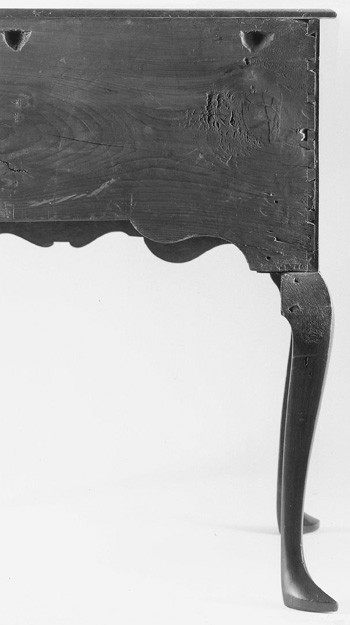
Detail of the dovetailed case construction of the dressing table illustrated in fig. 21. (Photo, Gavin Ashworth.)
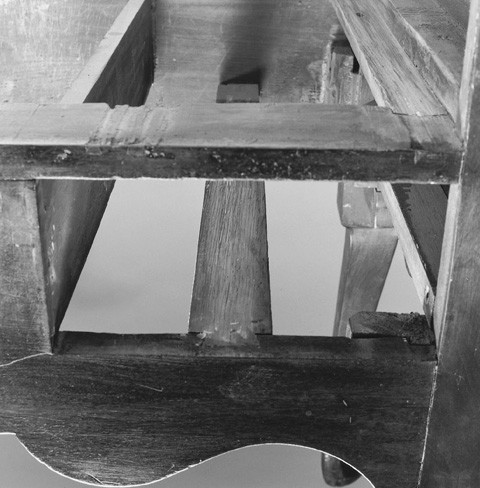
Detail of the case and leg construction of the dressing table illustrated in fig. 21.
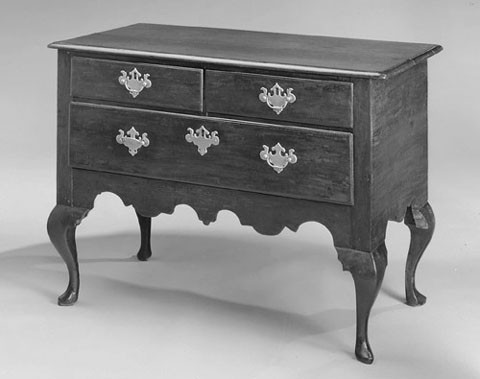
Dressing table, Rappahannock River Basin of eastern Virginia, 1755–1770. Walnut with yellow pine. H. 28 1/2", W. 38", D. 20 1/4". (Courtesy, Sumpter Priddy, Inc.)

Detail of the case and leg construction of the dressing table illustrated in fig. 26.
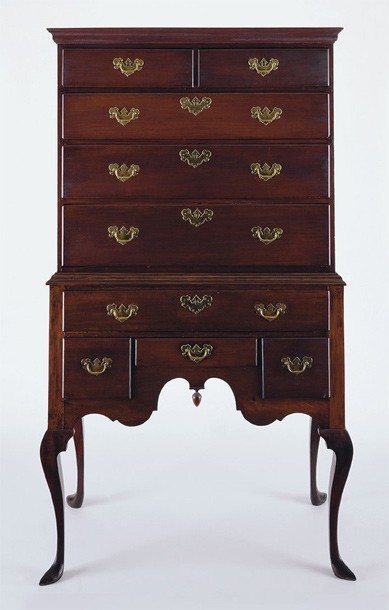
High chest signed by Christopher Townsend, Newport, Rhode Island, 1748. Walnut with pine. H. 70", W. 38 1/2", D. 20 1/2". (Private collection; photo, Gavin Ashworth.)

Detail of the case construction of the high chest illustrated in fig. 28. (Photo, Gavin Ashworth.)

Detail of a rabbeted rear leg on the high chest illustrated in fig. 20. (Photo, Gavin Ashworth.)
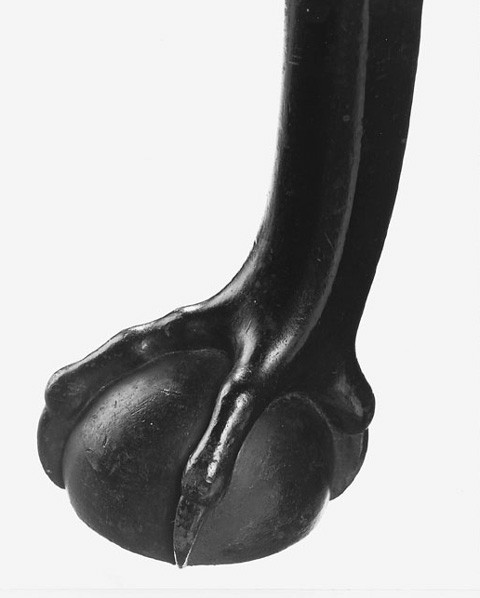
Detail of a foot on the high chest illustrated in fig. 20. (Photo, Gavin Ashworth.)

Dining table probably by Christopher or John Townsend, Newport, Rhode Island, 1745–1755. Mahogany with maple and pine. H. 30 5/8", W. 68 1/2", D. 68 3/4" (open). (Courtesy, Colonial Williamsburg Foundation.)

Desk-and-bookcase by Christopher Townsend, Newport, Rhode Island, 1745–1755. Mahogany throughout. Dimensions not recorded. (Private collection; photo, Gavin Ashworth.)
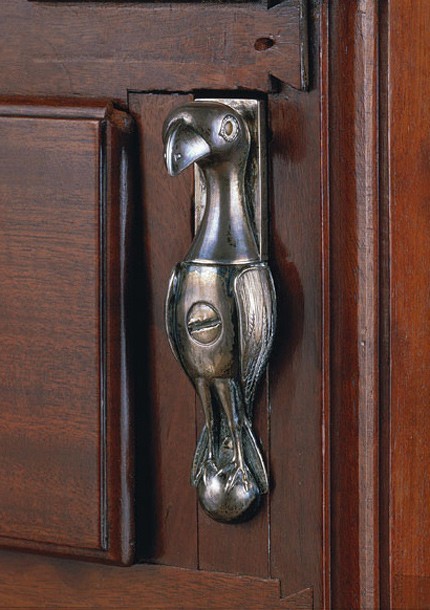
Detail of the silver mount on the right fallboard support of the desk-and-bookcase illustrated in fig. 33. (Courtesy, Sotheby’s.)

Desk-and-bookcase bearing the label of Job Townsend, Newport, Rhode Island, 1750–1765. Mahogany with chestnut and tulip poplar. H. 82 1/2", W. 40", D. 24 1/2". (Courtesy, Rhode Island School of Design; gift of Mrs. Murray S. Danforth; photo, Gavin Ashworth.) The pediment is missing. www.risd.edu

Desk-and-bookcase attributed to Christopher Townsend, Newport, Rhode Island, 1735–1755. Mahogany with unrecorded secondary woods. H. 108", W. 36", depth not recorded. (Parke-Bernet Galleries, Inc., Important American Furniture from the Estate of the late Cornelius C. Moore, Newport, Rhode Island, New York, October 30, 1971, lot 154.) The door panels are missing, and the feet are incorrect replacements.
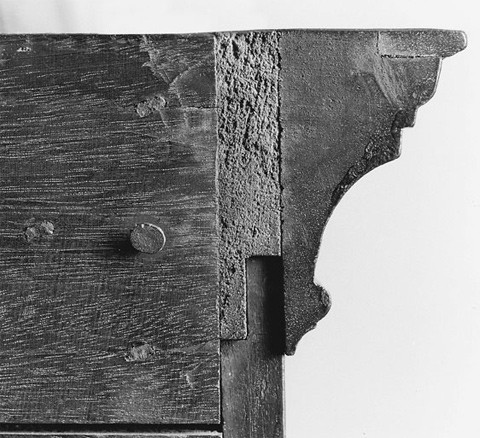
Detail showing the attachment of the cornice molding on the desk-and-bookcase illustrated in fig. 33. (Photo, Gavin Ashworth.)
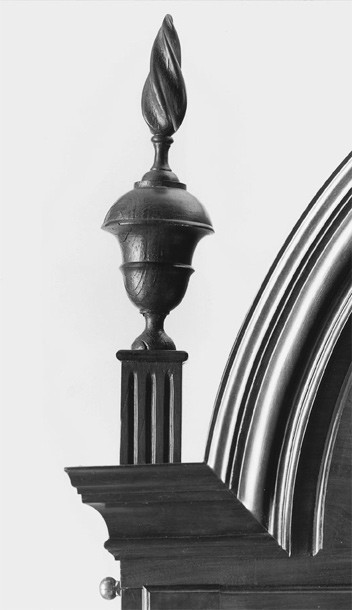
Detail of a finial and section of cornice molding on the desk-and-bookcase illustrated in fig. 33. (Photo, Gavin Ashworth.)
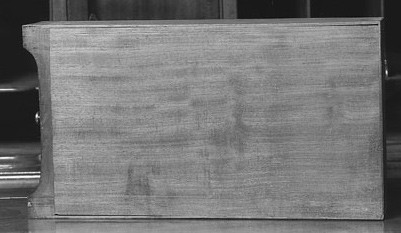
Detail of a glued-in drawer bottom on the desk-and-bookcase illustrated in fig. 33. (Photo, Gavin Ashworth.)

High chest, probably Job or Christopher Townsend, Newport, Rhode Island, 1730–1750. Walnut, maple and walnut veneer, and lightwood inlay with white pine and maple. H. 70 3/8", W. 38", D. 20 1/4". (Chipstone Foundation; photo, Gavin Ashworth.) The mid-molding is replaced.
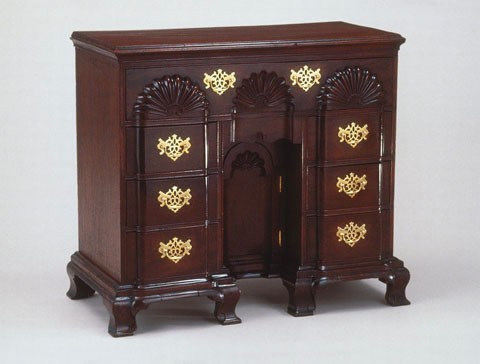
Bureau table, probably Job or Christopher Townsend, Newport, Rhode Island, 1740–1750. Mahogany with white pine. H. 34 1/4", W. 37 1/2", D. 21". (Joseph and June Hennage collection; photo, Hans Lorenz.)

Bureau table, probably Job or Christopher Townsend, Newport, Rhode Island, 1740–1750. Mahogany with white pine. H. 34 1/2", W. 39 1/4", D. 21". (Private collection; photo, Gavin Ashworth.)
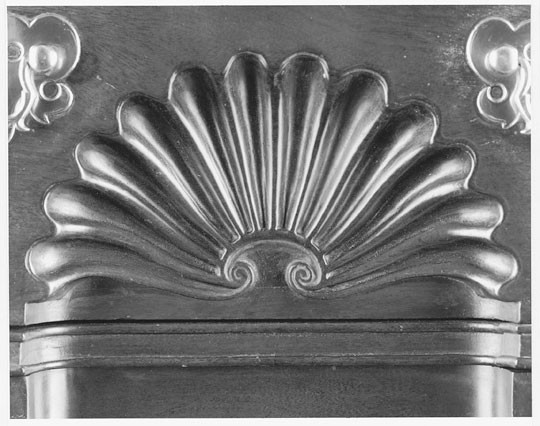
Detail of the concave shell on the upper drawer of the bureau table illustrated in fig. 42. (Photo, Gavin Ashworth.)
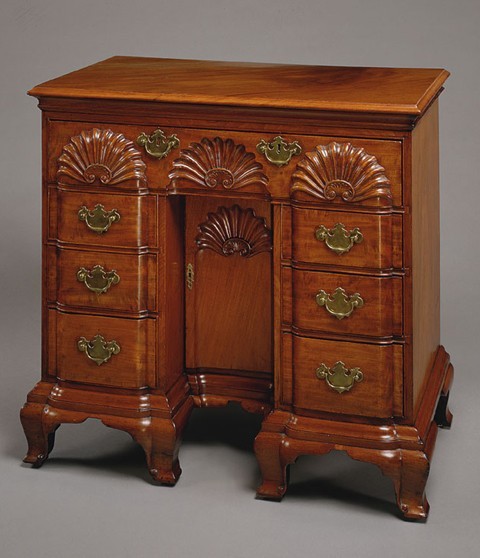
Bureau table attributed to John Townsend, Newport, Rhode Island, 1765–1770. Mahogany with white pine, chestnut, and tulip poplar. H. 34 3/8", W. 36 1/2.", D. 20 1/2.". (Courtesy, The Metropolitan Museum of Art, Gift of Mrs. Russell Sage, 1909 (10.125.83) Photograph © The Metropolitan Museum of Art.)

Bureau table attributed to Edmund Townsend, Newport, Rhode Island, 1760–1780. Mahogany with chestnut and white pine. H. 33", W. 36 1/4", D. 20 1/2". (Private collection; photo, Sotheby’s.)
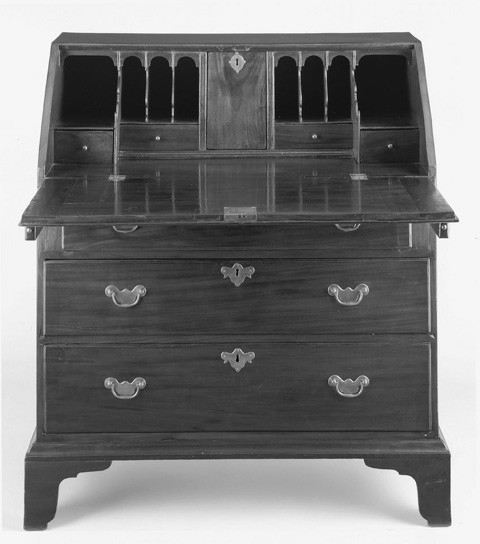
Desk by John Goddard, Newport, Rhode Island, 1745. Mahogany with white pine. H. 42", W. 35 1/2", D. 19". (Chipstone Foundation; photo, Gavin Ashworth.)
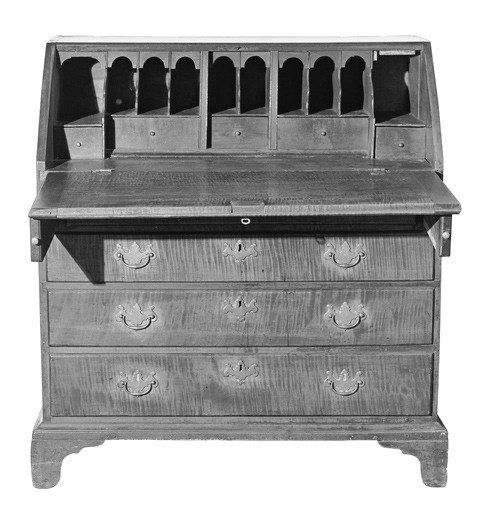
Desk, Newport, Rhode Island, 1760–1770. Maple with chestnut and tulip poplar. H. 40 7/8", W. 38 3/8", D. 20 7/16". (Private collection; photo, Museum of Early Southern Decorative Arts.)
